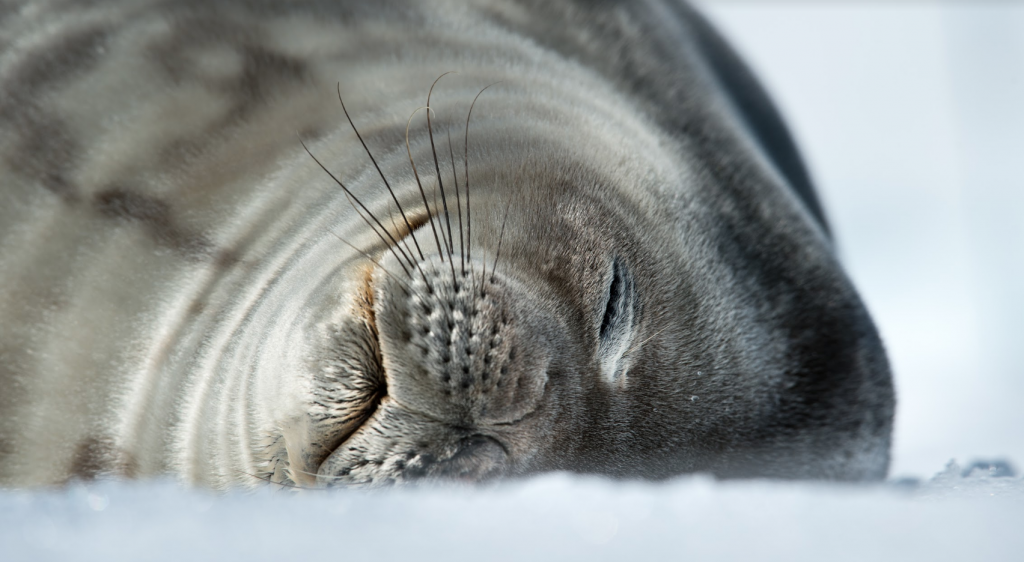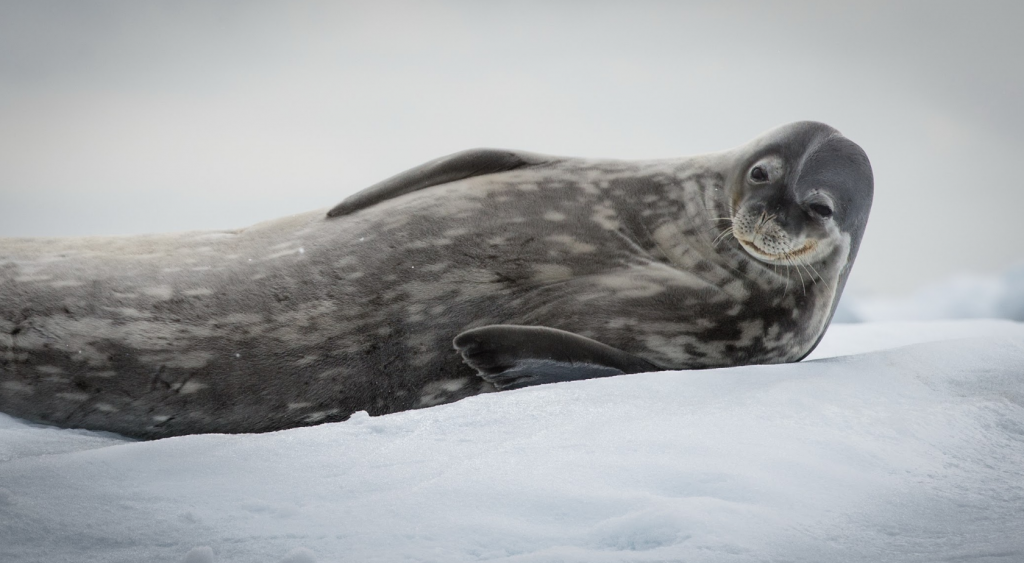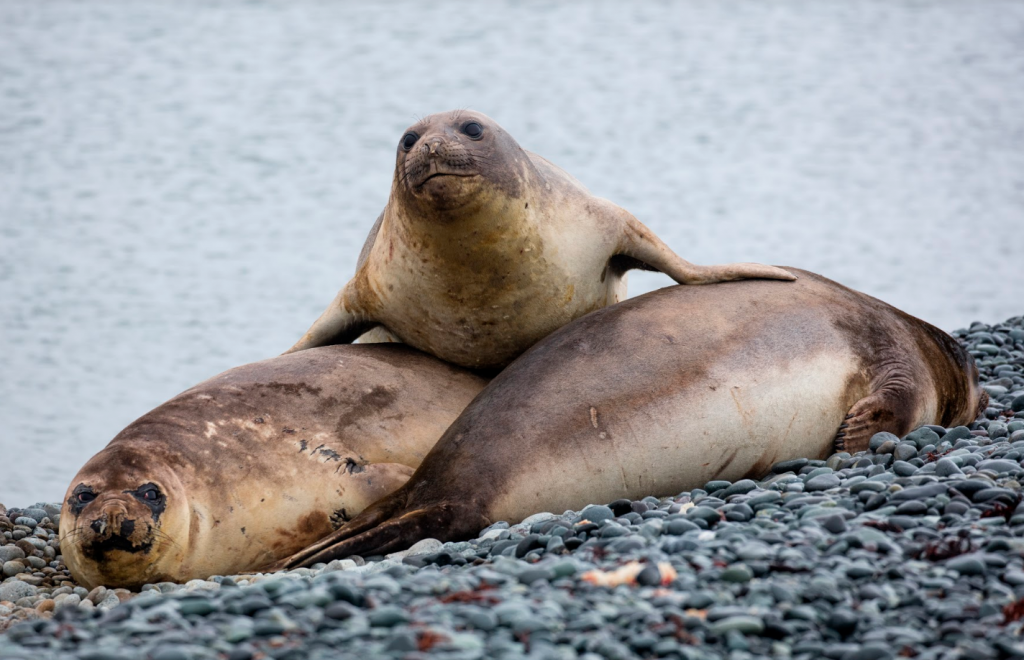Antarctica Seals: species & adaptations to the cold!
There are 6 species of seals (or pinnipeds!) in Antarctica and the Sub-Antarctic islands: they forage and breed in these areas where there is abundance of food!
Terrestrial or Ice breeding species?
The Antarctic Fur Seal and the Southern Elephant Seal breed on land while the Weddell Seal, the Crabeater seal, the Leopard seal and the Ross seal are ice-breeding species.
Eared Seals versus True seals?
They are generally categorized between eared seals (Otarids) and true seals (Phocids). The only eared seal living in the Antarctic region is the Antarctic. All the other 5 species are considered true seals because of their characteristics. Eared seals, called otarids, have ear flips, long front flippers used for propulsion with no visible claws. They also have hind flippers that allow them to move quickly on land. The fur is their main insulation. True seals, also called Phocids, also have ears, but no flaps! Front flippers are shorter and claws are visible. They use their hind flippers for propulsion in water and blubbers is their main source of insulation.
Photo Credit: Poseidon Expeditions
Adaptations
All six species have developed incredible adaptations that allow them to thrive in these extreme latitudes. Their sensitive “whiskers” allow them to detect movement in water and to scan where their prey is; their special dentition which has evolved according to their specific diet, and their natal pelage and blubber is essential for their survival.
Seals regulate their body temperature when in the water by sticking their flippers out of the water, since the air is warmer. Southern Elephant seals, which breed on land, can overheat when they spend time on land so they cool off by covering themselves with sand.
Seals have also adapted to feed at nighttime. For some species 95% of their diet is krill which comes closer to the surface of water during the night. This is known as nocturnal foraging.
Seals are excellent divers and they have also developed incredible adaptations to dive. Unlike humans, they do not have facial sinuses (air spaces) and their middle ear has a complex vascular lining to counter pressure. They also exhale prior to diving to reduce the amount of air in their lungs, storing the minimum oxygen levels to survive. It has been found that Southern Elephant Seals for instance can dive for a duration of two hours and a depth of 2,000 meters!
Photo credit: Poseidon Expeditions
Diet
Seals diet is varied. For some species their main food source is krill. For others, like the Southern Elephant seal, fish and squid is also on the menu. The leopard seal eats not only krill, but seal pups and penguins!
Ice Breeding Species
- Crabeater seals – Don’t be fooled! No crabs on the menu for the Crabeaters. This is the most abundant seal in the world. It has been estimated that there are about 15 million around Antarctica. Guess what? They are circumpolar species, meaning they can be anywhere around the continent. Their teeth are specially adapted to consume krill.
- Weddell seals -This is the most southerly seal and do not form colonies. They are deep divers going down to depths of 800m and their predated by orcas!
- Leopard seals – They are the top predators among the pinnipeds being quite opportunistic. Although 50% of their diet is based on krill, they feast in penguin chiks and seal pups.
- Ross seals – These creatures are rarely observed and are also the least researched as they breed on older ice floes and areas ships can’t reach.
Photo credit: Poseidon Expeditions
Terrestrial breeders
- Fur Seals – These are the smallest of the Antarctic seals and the only eared seal of these latitudes and have the longest nursing period. Hunted in the early 1800’s they were once almost extinct, but their numbers have increased remarkably as they are now protected species!
- Southern Elephant Seals– Massive creatures with sexual dimorphism: males can weigh up to 4,000kg while females can reach 900 kg. They are the record holders for seal diving time: up to 2 hours, and for a depth of more than 2,000m. During their annual molt they lose both fur and skin and are quite vocal! They are called elephant seals, because mature males will gradually develop the big nose, which will amplify the sound and make their calls more attractive for females!







Leave a Reply